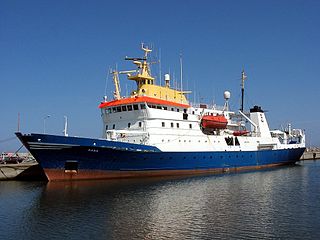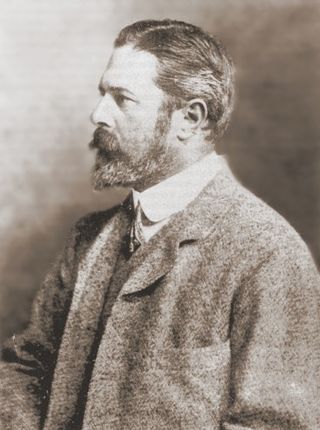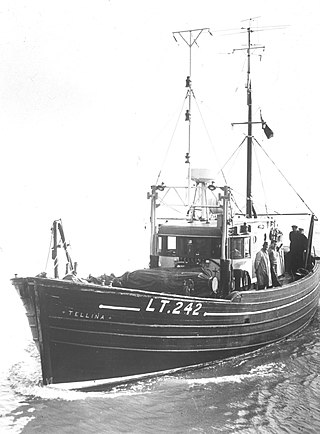
The goal of fisheries management is to produce sustainable biological, environmental and socioeconomic benefits from renewable aquatic resources. Wild fisheries are classified as renewable when the organisms of interest produce an annual biological surplus that with judicious management can be harvested without reducing future productivity. Fishery management employs activities that protect fishery resources so sustainable exploitation is possible, drawing on fisheries science and possibly including the precautionary principle.

Fisheries science is the academic discipline of managing and understanding fisheries. It is a multidisciplinary science, which draws on the disciplines of limnology, oceanography, freshwater biology, marine biology, meteorology, conservation, ecology, population dynamics, economics, statistics, decision analysis, management, and many others in an attempt to provide an integrated picture of fisheries. In some cases new disciplines have emerged, as in the case of bioeconomics and fisheries law. Because fisheries science is such an all-encompassing field, fisheries scientists often use methods from a broad array of academic disciplines. Over the most recent several decades, there have been declines in fish stocks (populations) in many regions along with increasing concern about the impact of intensive fishing on marine and freshwater biodiversity.

Ernest William Lyons Holt or E. W. L. Holt was an English marine naturalist and biologist who specialized in ichthyology, the study of fish. His work helped lay a scientific foundation for the fishery management in Ireland, and together with William Spotswood Green, he strongly influenced the development of the Irish Fisheries in its early years.
The Centre for Environment, Fisheries and Aquaculture Science (Cefas) is an executive agency of the United Kingdom government Department for Environment, Food and Rural Affairs (Defra). It carries out a wide range of research, advisory, consultancy, monitoring and training activities for a large number of customers around the world.

A fishery is an area with an associated fish or aquatic population which is harvested for its commercial or recreational value. Fisheries can be wild or farmed. Population dynamics describes the ways in which a given population grows and shrinks over time, as controlled by birth, death, and migration. It is the basis for understanding changing fishery patterns and issues such as habitat destruction, predation and optimal harvesting rates. The population dynamics of fisheries is used by fisheries scientists to determine sustainable yields.

The Marine Biological Association of the United Kingdom (MBA) is a learned society with a scientific laboratory that undertakes research in marine biology. The organisation was founded in 1884 and has been based in Plymouth since the Citadel Hill Laboratory was opened on 30 June 1888.

Knowledge of fish age characteristics is necessary for stock assessments, and to develop management or conservation plans. Size is generally associated with age; however, there are variations in size at any particular age for most fish species making it difficult to estimate one from the other with precision. Therefore, researchers interested in determining a fish age look for structures which increase incrementally with age. The most commonly used techniques involve counting natural growth rings on the scales, otoliths, vertebrae, fin spines, eye lenses, teeth, or bones of the jaw, pectoral girdle, and opercular series. Even reliable aging techniques may vary among species; often, several different bony structures are compared among a population in order to determine the most accurate method.

Fedor Ilyich Baranov was a founder of fisheries science, and has been called the "grandfather of fisheries population dynamics". He is best known for setting the foundations for quantitative fisheries science as well as for his contributions to development of fishing technology.
Winifred Evelyn Frost was a freshwater biologist. Her research focused primarily on eels, minnows, pike, and char by observing fish in the wild. After some time as chair, Frost was then appointed president of the Windermere and District Angling Association.

RV Cirolana was a fisheries research vessel used by the Centre for Environment, Fisheries and Aquaculture Science and originally built for the Ministry of Agriculture, Fisheries and Food. She was initially intended to replace the RV Ernest Holt operating in arctic waters around Bear Island (Norway) and Iceland, but following the Cod Wars spent most of her working life conducting fisheries surveys in the North Sea, Irish Sea and English Channel. For the first part of her career RV Cirolana was based in the fishing port of Grimsby, but after bridge and channel dredging work improved the depth, it was deemed acceptable to bring her to Lowestoft.

RV Huxley was the first research vessel used by the Marine Biological Association of the United Kingdom explicitly for fisheries research and is regarded as the first vessel yielding data for the Ministry of Agriculture, Fisheries and Food - Directorate of Fisheries, now known as the Centre for Environment, Fisheries and Aquaculture Science (Cefas).

RV Ernest Holt (GY591) was a fisheries research vessel that was operated by the Ministry of Agriculture, Fisheries and Food - Directorate of Fisheries, now known as the Centre for Environment, Fisheries and Aquaculture Science (Cefas).

Dorothy Elizabeth Thursby-Pelham (1884–1972) was a scientist at the Zoological Laboratory, University of Cambridge and subsequently at the Ministry of Agriculture, Fisheries and Food - Directorate of Fisheries laboratory in Lowestoft who has been called 'England's first female sea-going fisheries scientist' and was an active member of the International Council for the Exploration of the Sea (ICES).

RV Corella (LT767) was a fisheries research vessel that was operated by the Ministry of Agriculture, Fisheries and Food - Directorate of Fisheries, now known as the Centre for Environment, Fisheries and Aquaculture Science (Cefas) between 1967 and 1983.

RV Clione (LT421) was a fisheries research vessel that was operated by the Ministry of Agriculture, Fisheries and Food - Directorate of Fisheries, now known as the Centre for Environment, Fisheries and Aquaculture Science (Cefas) between 1961 and 1988.

RV Tellina (LT242) was a fisheries research vessel that was operated by the Ministry of Agriculture, Fisheries and Food - Directorate of Fisheries, now known as the Centre for Environment, Fisheries and Aquaculture Science (Cefas) between 1960 and 1981.

MV Brown Bear was an American research vessel in commission in the fleet of the United States Department of Agriculture′s Bureau of Biological Survey and Alaska Game Commission from 1934 to 1940 and in the fleet of the United States Department of the Interior′s Fish and Wildlife Service from 1940 to 1942 and from 1946 to 1951, under the control of the University of Washington from 1952 to 1965, and in commission in the fleet of the United States Fish and Wildlife Service from 1965 to 1970 and of the National Oceanic and Atmospheric Administration′s National Marine Fisheries Service (NMFS) from 1970 to 1972.
The SY Hildegarde and the SY Hiawatha were steam yachts chartered by the Ministry of Agriculture, Fisheries and Food - Directorate of Fisheries, now known as the Centre for Environment, Fisheries and Aquaculture Science (Cefas) between 1912 and 1914 to carry out fishery investigations.

Michael Graham (1898–1972) CMG OBE was a British fisheries scientist, author, and ecologist. He was the director of the Ministry of Agriculture, Fisheries and Food fisheries laboratory in Lowestoft (1945–1958), now known as the Centre for Environment, Fisheries and Aquaculture Science (Cefas). His classic book, The Fish Gate, published in 1943, paints a picture of the near-collapse of the British fishing industry through overfishing that occurred before both the First and the Second World Wars.
Dianne Margaret Tracey is a New Zealand marine biologist specializing in research on deep-sea fisheries and deep-sea corals at the National Institute of Water and Atmospheric Research (NIWA). She works on the biology of deep water fishes such as orange roughy, and deep sea corals. She was one of the first women in New Zealand to work in fisheries and to work on research vessels and has spent her career advocating and mentoring women in marine science.
















